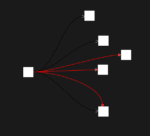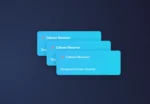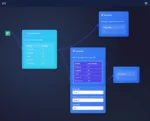
by tyler garrett | May 27, 2025 | Data Management
In today’s fast-paced digital economy, aligning strategic business concepts with the right technological execution is critical. Too often, businesses witness a gap between visionary terms and their corresponding technological implementation, causing delays, misunderstandings, and misalignment across teams. Imagine bridging this gap with precision, providing your business stakeholders immediate clarity and your technical team actionable guidelines. That’s precisely what a Business Term to Technical Implementation Mapping Repository does. As a seasoned partner in Node.js consulting services, we stress the importance of well-defined mappings between strategic ambitions and technical solutions. In this blog, we will dive deep into how your business can leverage a mapping repository, align internal communication, enhance your workflow transparency, and strategically establish yourself as a data-empowered, innovative company.
What is a Business Term to Technical Implementation Mapping Repository?
A Business Term to Technical Implementation Mapping Repository is a structured collection or database, meticulously maintained to document the correlation between high-level business terminology and their corresponding technical implementations. Think of it as a translation guide, converting the language spoken in board meetings into technical workflows, architectures, diagrams, and code bases. At a technical level, it’s a robust reference that enables your data engineers, analysts, and software developers to rapidly determine infrastructure requirements that fulfill strategic business initiatives.
This repository goes beyond mere definitions. It links strategic terms, objectives, and KPIs to actual algorithms, data workflows, tables, software components, and deployment scripts. Essentially, it becomes an integral part of your organization’s innovation and digital transformation roadmap. Rather than losing hours emailing back-and-forth or holding numerous clarification meetings, stakeholders and tech teams source information directly from this organized storehouse. For instance, integrating complex analytics and visuals into reporting demands transparent mappings, guiding your team on how business descriptions translate technically, eventually ensuring accurate visualization of data creatively as per business expectations.
The establishment of this type of mapping repository is particularly beneficial in multi-disciplinary environments, global-scale implementations, and digital adopters seeking agile adaptability. It enables scalability, avoids confusion, accelerates time-to-market, and fosters self-sufficient, agile development teams ready to craft innovative solutions grounded in clear business-contextual understanding.
The Strategic Importance of Clear Business-Technical Alignments
Aligning technological implementation with strategic business terms is not a luxury—it’s an essential factor for organizational agility and proactive innovation. Clear alignment ensures everyone on your team—from business executives and data analysts to software engineers—operates on the same strategic page. Removing ambiguity within critical processes helps you avoid costly misunderstandings, project delays, and misalignment between project outcomes and initial expectations.
Furthermore, clear alignment builds trust through transparency of technical decisions and clear explanations of how technological solutions serve business values. It’s no wonder organizations spotlight transparent data-sharing methods within mapping repositories to guarantee that every stakeholder, including end-users, understands clearly the origin and importance of data-driven decisions. Clear mappings also allow quicker identification of gaps in technical implementations, which in turn accelerates innovation efforts.
A strategically managed mapping repository ensures smooth handovers and easy onboarding of new team members. As organizations expand, merge, or pivot, rapidly scaling teams can rely on an accessible, reliable, and updated reference to bridge knowledge gaps and save time during the knowledge-transfer processes. By embracing clarity in business-term mapping, companies empower staff to manage complexity with ease and confidence, focusing energies instead on innovating fresh solutions and exploring new business possibilities.
Achieving Cohesion through a Mapping Repository
Implementing and maintaining a clear mapping repository requires more than just documenting existing processes. It demands active collaboration between business leaders and technical teams, facilitating structured discussions around both strategic objectives and execution-level details. Through regular interactions, stakeholders define and refine technical implementations, identifying opportunities to optimize data flows, refine analytics models, or simplify technology infrastructures.
These collaborative sessions ensure continuous alignment between strategic ambitions and technical deployments, enabling organizations to respond dynamically to evolving business environments. A well-maintained repository identifies shared components easily, ultimately reducing redundancy, cutting costs, fostering reuse of logic, and strengthening governance. For example, leveraging alignment between business terminology and technical processes enables technical implementations like time-partitioned processing of historical data—making previously tricky technical domains understandable at a business strategic level.
This enduring cohesion facilitates quicker decision-making, reduces friction between teams, and enhances the overall effectiveness of digital transformation strategies. By keeping the mapping repository accessible and organized, decision-making becomes consistently data-driven and transparent, creating a smoother, streamlined inter-departmental workflow that empowers your enterprise teams to focus their energy towards innovation, creativity, and space to discover emerging technical opportunities.
The Role of AI and Automation in Enhancing Mappings
Artificial Intelligence (AI) and automation have revolutionized many aspects of data infrastructure and transformations. In the context of the Business-Term Mapping Repository, applying AI-enhanced data engineering workflows increases accuracy, maintains mappings efficiently, and quickly identifies potential gaps or inconsistencies. Machine learning capabilities assist in automating the extraction, categorization, and linking of business terminology to documentation, code repositories, and real-world implementations.
Automation frameworks can intelligently recognize similarities across business terminology, suggest related validations, and propose refinements of technical alignments, significantly reducing manual input. Harnessing these capabilities supports organizations in proactively sustaining the accuracy of the repository, ensuring it adapts dynamically as both business language and technology evolve.
Moreover, incorporating code generation practices for high-performance data transformations ensures that strategic business initiatives quickly materialize into technical results. AI-driven code-generation processes synergize effectively with the strategic mappings by swiftly translating strategic goals into reusable scripts, analysis algorithms, and operationalized models.
Practical Steps to Implement a Mapping Repository in Your Organization
Implementing a successful mapping repository begins with setting clear organizational objectives and involving key stakeholders—domain experts, solution architects, business analysts, and developers. Begin by auditing and documenting all current business terminologies, definitions, standards, and their implied technical counterparts. Determine initial key business terms and essential performance indicators to pilot the mapping activity. Leveraging automated tools like repository management platforms, development suites, databases, and service registries simplifies the documentation and collaboration work.
Consider introducing templated frameworks and linking entries directly to technical documentation, scripts, and architectural diagrams. Incorporate innovative solutions like Python-powered web scraping and tagging scripts for automating new business-term updates and ensuring periodic, proactive repository refreshes.
Strategy-wise, engaging third-party consulting practices or hourly software consulting expertise could significantly speed up your repository setup process. External experts provide neutral perspectives, strategic guidance, technical insights, and established best practices—ensuring a robust framework built on extensive real-world experience. Regular training sessions and workshops will further ensure successful adoption and sustained growth of the mapping repository across your organization.
Conclusion: A Mapping Repository is Your Strategic Advantage
In today’s complex business environments, building bridges that seamlessly connect business expectations and technological execution is the key to continued relevance and innovation. A Business Term to Technical Implementation Mapping Repository nurtures agility, clarity, collaboration, and enables proactive deployment of cutting-edge technology. In removing ambiguity from the equation, your organization can stay laser-focused on traditional core competencies while continuously evolving technologically and strategically.
Ready to utilize a mapping repository to optimize clarity and agility in your rapidly scaling and continuously innovating business? Don’t hesitate to strategically leverage our expertise in technical consulting, innovation enablement, and tailored service packages, positioning your company on a path toward streamlined communications, faster deployment, and clear, strategic innovation.
Take the first step toward integrating effective business-term mapping. You’ll experience improved understanding, strengthened collaboration, transparent alignment processes, innovation acceleration, and operationalized agility, ultimately positioning your business at the leading edge of its industry.
Tags: Data Strategy, Technical Implementation, AI workflows, Automation, Software Consulting, Data Visualization
Thank you for your support, follow DEV3LOPCOM, LLC on LinkedIn and YouTube.

by tyler garrett | May 27, 2025 | Data Management
As organizations grow more data-centric, the pressure on IT and analytics teams to rapidly provision data access can become overwhelming. Decision-makers increasingly require instant insights, and a backlog or delay in granting data access requests can dramatically impede strategic agility. Implementing a robust self-service data access request workflow not only eliminates frustrating bottlenecks but empowers business users to quickly and securely tap into vital information streams. In this guide, we’ll explore the foundational insights and actionable strategies required to successfully implement a data access request workflow that promotes innovation, ensures compliance, and empowers your organization to harness its data assets efficiently.
The Business Value of Self-Service Data Access
A streamlined self-service data access workflow provides numerous tangible benefits that deliver both immediate value and long-term strategic advantages. At its core, such a workflow significantly reduces data provision lead times, directly translating into quicker analytics and more responsive decision-making capabilities across multiple departments. Gartner consistently emphasizes the importance of enabling business teams to independently explore data, highlighting its critical impact on agility and responsiveness.
Beyond timeliness, self-service workflows reduce the administrative load on IT and data engineering teams, allowing talented technical resources to dedicate more time toward advanced analytics and innovative solution-building. When defining your workflows, consider embedding advanced automation strategies such as those described in our advanced ETL consulting services, streamlining data preparation and integration tasks while ensuring data quality standards remain high.
Furthermore, implementing structured self-service access enhances data governance and security through transparency and auditability. Instead of blanket permissions, each request becomes an explicit, traceable action, strengthening security posture. Decision-makers benefit from increased visibility into data’s usage, patterns, and deployment, ultimately using this to inform strategic investment and prioritization choices for data infrastructure and visualization solutions like our described approach in geographic coordinate systems selection.
Understanding the Key Components of an Effective Workflow
Establishing the right foundation is critical when designing your self-service workflow. Typically, the workflow consists of several key sequential components: request initiation, review and authorization, automated provisioning, ongoing governance and monitoring, and data usage analytics. Each component in your workflow should be thoughtfully designed and tailored to reflect your organization’s unique data culture, compliance requirements, and technology infrastructure.
Firstly, request formation processes require intuitive user experiences to facilitate accurate, detailed submissions. These forms can leverage design principles covered in our blog post on negative space utilization in dashboard design to present streamlined, minimalistic interfaces that remove ambiguity and enhance user clarity.
Next, the authorization component demands clearly defined roles and responsibilities, establishing delegation authority and approver oversight functionalities. Leveraging automated notification triggers built using Continuous Integration systems discussed in our Continuous Integration for data transformation logic methodologies ensures prompt, intelligent handling of requests.
Moreover, automated provisioning involves critical orchestration utilizing data integration and ontology-driven frameworks for streamlined data delivery. Our blog explains the power of applying semantic-driven automation in your workflows in greater detail in ontology-driven data integration.
Best Practices for Golden Compliance and Governance Standards
While removing data access friction accelerates analytics capabilities, doing so without strict compliance considerations exposes your organization to unnecessary risks. Self-service workflows must incorporate best-practice governance standards, ensuring that data is only accessed by authorized individuals for authorized purposes. Design automated policy checks and implement robust monitoring capabilities to detect deviations, unauthorized access attempts, or unusual data consumption patterns.
To build trust and manage risk effectively, maps boundaries around permissions clearly, ensuring employees know precisely what data sets they are authorized to access and why. It is entirely acceptable—and often strategically wise—to deny requests that do not align with business guidelines. For insights into strategic feature decision-making, read our article on when to say no to a software feature and why that builds trust.
Furthermore, empower your governance model by embedding comprehensive audit trails and metrics to provide crucial traceability whenever regulators or internal stakeholders query access decisions and usage history. This aligns with our philosophy that quality analytics discussions require thorough reasoning based on transparent metrics; see our guide data—a quick study guide for more guidance.
Automating Request Provisioning Using Composite Patterns and Integrated Visualizations
A genuinely sophisticated self-service workflow capitalizes on automation at every opportunity. Implement composite pattern visualizations to help decision-makers easily read request workflow status, data lineage, and approval timelines. Our article on composite pattern visualization for multi-metric analysis demonstrates how visual aids can merge multiple data sets and metrics into one intuitive representation, speeding up interpretation and decision-making significantly.
Integrating visual analytics into your automation strategy additionally adds intuitive context for business users, improving their ability to understand and manage their data access processes. For example, automated comparative dashboards—akin to the visualizations described in our piece about small multiples implementation for comparative analysis—allow rapid interpretation and meaningful business insights into the effectiveness and frequency of data usage patterns.
Further automating the self-service workflow ensures more accurate fulfillment by minimizing human error and accelerating configuration steps. Engineering innovations, like employing advanced integration platforms and workflows extensively covered on our dedicated advanced ETL consulting services page, enable streamlined ecosystems linking business requirements directly into provisioning and visualization processes.
Reliability, Scalability, and Observability of Your Self-Service Workflow Implementation
A powerful data access request workflow ultimately hinges on robust reliability, performance scalability, and top-tier observability. Transitioning smoothly from limited manual requests to an automated self-service system organically increases volume and complexity, forcing decision-makers to critically assess database infrastructure standards and monitoring frameworks. The crucial importance of observability and scalability metrics is extensively covered in our approach to driving reliability, performance, scalability, and observability in your database system.
Investing in comprehensive logging frameworks and performance monitoring will equip IT executives with detailed real-time data, enabling rapid diagnostics when troubleshooting automated workflows. Moreover, establishing scalability preparations to gracefully handle rising request volumes will allow workflow growth to drive competitive analytics without causing performance degradation or infrastructure bottlenecks.
Critical decisions around database platforms, infrastructure optimization measures, and toolchain technology selections play a central role. IT strategists seeking improved tooling guidance will find actionable technical insights in our reasoning on why Mac vs Windows is JavaScript’s BFF when using VS code, facilitating developer empowerment and productivity that directly correlates with infrastructure resilience and system observability.
Conclusion: Embrace Self-Service Data Access for Competitive Advantage
An effective, automated self-service data access request workflow unlocks numerous strategic analytics advantages, from streamlined administrative overhead to greater agility, responsiveness, and data governance without sacrificing compliance standards. By understanding each essential workflow component, embedding advanced visualization and automation practices, and rigorously reinforcing governance structures, you lay robust foundations to elevate your organization’s data culture significantly.
Strategic technical leaders looking for hands-on expert consultancy can leverage innovative approaches from partners with proven expertise in advanced ETL consulting and leading-edge data analytics strategy implementations. Accelerate your organization’s effectiveness and agility today by embracing a comprehensive, robust self-service data access request workflow.
Thank you for your support, follow DEV3LOPCOM, LLC on LinkedIn and YouTube.

by tyler garrett | May 27, 2025 | Data Management
Organizations today face unprecedented challenges and opportunities in handling large-scale, evolving data models. Every data-driven business understands that reliable, timely data fuels better decisions, which directly impact growth and innovation. Yet, managing complex enterprise data models as they scale has become increasingly difficult, particularly as businesses transition into cloud environments and distributed analytics ecosystems. Effective data model versioning and deployment strategies are no longer optional—they’re foundational. Leveraging best practices ensures smoother updates, reduces downtime, and minimizes risks associated with schema changes. In this guide, we break down exactly why mastering enterprise data model versioning and deployment matters, how to strategically implement it, and why it’s critical to driving informed business decisions and innovation.
Why Versioning your Enterprise Data Model Matters
Versioning isn’t merely about keeping track of changes—it’s a cornerstone practice enabling consistency, traceability, and collaboration for your analytics environments. Today’s modern enterprise analytics often employ diverse tools like Power BI to visualize complex business data. As your business expands, your reporting dashboards, data schemas, and ETL processes rapidly evolve, and unmanaged changes can result in inconsistent analytics results or, worse, downtime of critical business intelligence tools.
By implementing robust versioning practices, businesses can quickly pinpoint schema evolution, assess its impacts, and roll back problematic changes without disrupting the end-user experience. This minimizes risk, simplifies debugging, and promotes accountability across your analytics team. If your team already leverages solutions such as Power BI, professional guidance provided through reputable Power BI consulting services can streamline detailed version control practices and deployment curated explicitly for robust analytics solutions in complex, enterprise-level environments.
Moreover, clear versioning empowers companies to maintain supportive documentation around data model lineage and schema transitions, significantly minimizing team dependency on cumbersome spreadsheet-centric workflows that complicate collaborative work and dampen morale lowering dependency on Excel. Investing upfront in precise version control brings longer-term value, reducing confusion, and promoting a stable, healthy analytics environment.
Key Best Practices for Data Model Versioning
Adopting strategically sound versioning practices ensures that your organization meets high data governance standards and mitigates potential issues from having multiple concurrent schema iterations. First, institute a clear and logical version numbering convention—such as Semantic Versioning (“SemVer”)—so everyone understands the scope and implications of new changes. Clearly delineate major schema shifts impacting compatibility from incremental updates to document this effectively.
Versioning should also be supported by consistent metadata documentation: what each model version combines, features that are being added or deprecated, and explanations for changes made. This adds to transparency and simplifies troubleshooting. Another recommended best practice is developing automated schema validation scripts to reduce human error in managing schema evolution.
Also important is integrating your versioning with comprehensive change management systems like Git to provide clear visibility across teams. Version control within data modeling also aligns well with broader pipeline configuration management and environment-specific settings, creating unified, streamlined workflows for deployments across development, staging, and production environments. Together, these approaches build a robust foundation, driving highly efficient processes for analytics innovation.
Strategic Deployment of Versioned Data Models in Production
Deploying data models to production requires careful and strategic planning. Enterprises can’t simply push schema updates without thorough testing and evaluation. Before deployment, teams should engage in meticulous scenario testing, including regression and integration tests, to ensure model stability. Map and identify potential breaking changes early in deployment pipelines, offering transparent notification and clear guidelines for users impacted by schema evolution.
Furthermore, considering data visualization is equally critical during the deployment stage. Ensuring schema changes and backend data adjustments align seamlessly with visual components requires understanding which data representations best suit your updates. Selecting the correct visualizations for your configured data ensures effective communication and smooth adoption among users who rely on visual analytics. If you’re unsure, this strategic guide helps businesses choose the appropriate chart types for data visualization, aiding your team in effective communications moving forward.
Creating automated promotion paths and data model pipelines further aids the strategic deployment of your versioned models, reducing manual errors and streamlining operations. You can utilize solutions such as advanced schema comparison tools to verify changes quickly, ensuring less downtime for end-users or downstream applications needing analytics services. Through thoughtful strategic deployment planning, organizations maintain consistency and trust among stakeholders and effectively reinforce data-driven innovation.
Navigating Common Pitfalls in Data Model Versioning and Deployment
The journey toward mastering data model management isn’t devoid of risks and potential pitfalls. Many organizations underestimate the complexity of version dependencies and overlook thorough documentation—mistakes that quickly compound as your enterprise grows. Without clear visibility into changes, managers and developers alike may introduce inconsistencies and confusion downstream that negatively affect company-wide analytics.
Another common pitfall is ignoring scalability considerations during initial data model design phases. Particularly with flexible NoSQL platforms like MongoDB Atlas, your underlying database technology should also influence your versioning strategy. Advanced, cloud-driven services enable dynamic scalability options, allowing businesses to proactively consider schema flexibility to meet increasing demand.
Lastly, avoid the temptation to implement every requested feature into the schema immediately—a disciplined approach ensures stable deployments and prevents excessively complex data architectures. As explained in this in-depth article on when to say no to software features, clear guidelines around schema evolution form part of sound stakeholder management, facilitating collaboration and trust between engineering and analytics teams.
Enterprise Tools Supporting Data Model Versioning and Deployment
The complexity of enterprise analytics demands robust, sophisticated versioning and deployment tools integrating with existing infrastructure. Applications like dbt (data build tool), Liquibase, and advanced database development platforms provide comprehensive, user-friendly capabilities to version schemas, track changes, and automate deployments systematically.
Tools tailored explicitly for BI deployments—such as Microsoft Azure DevOps integrated with Power BI and GitHub repositories—can align your deployment process with real-time version control, reducing downtime risk. These systems enable automated consistency checks, continuous integration (CI) and continuous deployment (CD) pipelines, error detection, and extensive schema validation.
Cloud-based analytical platforms also benefit deployments immensely. For example, solutions accommodating integration with cloud-stored data sources—such as efficiently connecting Power BI to larger data sets stored in cloud platforms or addressing limitations for connecting tools to large Google Sheets data sources—provide seamless interactions with newly versioned schema deployments. Selecting the right combination of deployment tools relevant to your specific contextual challenges preserves analytical accuracy, accelerates time-to-market, and drives innovation excellence across the organization.
Looking Ahead – Fortifying Enterprise Analytics through Effective Data Model Versioning Strategies
Enterprise data model versioning and deployment will continue to evolve alongside technology advancements and analytics best practices. Businesses embracing disciplined versioning approaches today will minimize risks, enhance collaboration efficiencies, and pave the way towards analytics innovation tomorrow.
Achieving stable data architectures requires a forward-thinking mindset, balancing analytical ambitions with practical organizational maturity and collaboration on shared standards. Strategic investment in correct tooling and professional expertise further solidifies efficiencies and mitigates growing pains through enterprise analytics scaling.
Ultimately, proactively managing data model changes with version control rigor and strategic deployment planning translates into measurable organizational advantages. If transitioning towards more robust analytics or data visualization challenges your team, seasoned consulting teams exist to guide you toward outcomes that foster technological agility, informed strategic decisions, and innovation acceleration.
Thank you for your support, follow DEV3LOPCOM, LLC on LinkedIn and YouTube.

by tyler garrett | May 27, 2025 | Data Management
In the rapidly evolving digital economy, clear, consistent, and effective data exchange is no longer optional—it’s critical. Data-driven organizations across sectors require efficient communication about their datasets to streamline operations, improve collaboration, and enhance decision-making. This is precisely where metadata exchange standards, such as the Data Catalog Vocabulary (DCAT), become game changers. By adopting robust metadata standards, organizations achieve greater interoperability, enhance their data discovery capabilities, and unlock deeper analytical insights. At our consultancy, we’re passionate about navigating the complexities of data management challenges and enabling decision-makers with strategic insights and innovative solutions. Let’s dive deeper into metadata exchange implementations, uncover their benefits, methodologies, and strategic importance, and demystify how standards like DCAT can empower your data and analytics capabilities.
The Importance of Metadata Exchange Standards in Today’s Data Ecosystems
Modern organizations generate massive volumes of data from innumerable sources. As complexity escalates, metadata—data about data—emerges as a foundational component. Metadata describes characteristics such as origin, structure, ownership, and lifecycle information, making datasets identifiable, reusable, and traceable. Adhering to metadata exchange standards such as the Data Catalog Vocabulary (DCAT) significantly enhances interoperability and communication across diverse platforms and teams.
For analytical processes to deliver real value, metadata must be accessible and comprehensible across systems. Implementing DCAT standards facilitates seamless data catalog management, enabling analysts, engineers, and stakeholders to quickly discover relevant datasets. Whether you’re navigating technical complexities with an eye on maximizing efficiency through streamlined production planning or enhancing auditing processes with event sourcing implementation, metadata standards effectively underpin these data-driven initiatives.
Moreover, leveraging metadata standards aligns well with advanced analytics workflows, ensuring data is discoverable and reusable in large-scale analytics scenarios. Organizations that adopt DCAT for metadata management optimize their resource allocation, dramatically improve their data governance capabilities, and set the stage for innovative analytics outcomes facilitated by advanced analytics consulting services.
Exploring DCAT Metadata Exchange Implementation
The Data Catalog Vocabulary (DCAT), standardized by the World Wide Web Consortium (W3C), provides an RDF-based vocabulary designed specifically to catalog datasets on the web. Implementing DCAT involves defining explicit metadata properties, such as title, description, publication date, usage rights, and dataset publisher, to facilitate data catalog accessibility and interoperability across applications, portals, and registries.
Successful DCAT implementation typically involves structuring datasets using standardized terminologies like “dcat:Dataset,” “dcat:Catalog,” “dcat:Distribution,” and “dcat:DataService.” The benefit of employing DCAT standards is substantial: users gain easier access and clarity regarding available datasets, reducing the time-intensive process of identifying relevant data assets. Additionally, DCAT simplifies dataset integration across diverse platforms, whether you’re adopting cutting-edge data lakehouse implementations or integrating polyglot persistence architectures.
Moreover, standardizing metadata per DCAT facilitates the automation of dataset discovery through search tools and APIs. This approach enhances productivity for analysts and engineers, who can focus valuable time solving complex problems rather than navigating fragmented data landscapes. By implementing DCAT strategically, your organization positions itself to adopt new technological trends easily, creating streamlined, efficient data-driven ecosystems.
Strategic Benefits of Adopting DCAT and Metadata Standards
Beyond technical advantages, adopting metadata standards like DCAT has strategic impacts that resonate at the organizational level. Leaders implementing DCAT find improvements in scalability, data quality management, governance, regulatory compliance, and collaboration efficiency.
Metadata standards foster consistency, dramatically improving data interoperability within your organization and across external partnerships. Accurate and accessible dataset descriptions improve resource allocation effectiveness, empowering your analytics teams to conduct more accurate analyses and forecasting. For decision-makers evaluating efficiency improvements, metadata-driven strategies align perfectly with improved resource allocation goals, driving smarter decisions across the entire organization.
Moreover, enhanced compliance practices result from robust metadata documentation. Standards like DCAT simplify your organization’s ability to adhere to industry and regulatory requirements, significantly minimizing compliance-related risks. Accurate and consistent metadata clearly illustrates the lineage of every dataset, something especially valuable in scenarios involving idempotent processing implementations for pipeline reliability and auditing purposes. Enhanced transparency and trust around data support a thriving organizational culture of reliability, accountability, and innovation through robust governance.
Practical Implementation Steps and Guidelines
Implementing metadata exchange standards successfully requires a structured set of guidelines and best practices. First and foremost, assess existing data catalogs: understand current metadata structures, vocabulary choices, and governance policies within your organization. This helps identify critical areas requiring immediate attention and fosters alignment on desired metadata standardization goals.
Next, explore existing DCAT use cases relevant to your organization. Conduct training sessions and workshops to ensure relevant stakeholders, including analysts, data managers, developers, and decision-makers, understand and align with the standard’s importance and benefits. Drawing inspiration from strategies employed in advanced architectures such as polyglot persistence architectures ensures your implementation remains flexible, dynamic, and tailored for your specific technology ecosystem.
As you move forward, define clear metadata governance processes that establish accountable roles ensuring dataset metadata quality, maintenance, and alignment. Invest in automated tools and frameworks designed around DCAT metadata standards to support efficient metadata management at scale. Finally, iterate continually, monitoring and refining metadata management processes and standards implementation to remain agile, responsive, and effective in your metadata-driven endeavors.
Common Challenges and How to Overcome Them
Any new standard implementation project brings associated challenges, and metadata exchange standards are no exception. Organizations frequently encounter resistance due to unfamiliar terminologies, workflow disruptions, and limited understanding of long-term value. To successfully overcome these hurdles, develop a comprehensive change management strategy emphasizing transparent communication, stakeholder engagement, and clearly articulated benefits of adoption.
Another common challenge is maintaining metadata accuracy, completeness, and consistency over time. You can address these issues through well-integrated automated monitoring tools, intelligently leveraging advanced analytic solutions that tap into source-aligned data processing methods to streamline data handling and maintain the integrity of metadata descriptions.
Complexity associated with multiple systems, diverse data structures, and interdependencies among metadata components may pose issues during implementation. Tackling this challenge requires an organized approach tailored specifically around best-practices-informed metadata management frameworks. Employing visual data representations such as treemap optimizations can facilitate clearer understanding of complex data and metadata relationships, making metadata-informed project workflows intuitive and impactful.
Conclusion: Embracing Metadata Exchange Standards for Long-Term Success
Metadata exchange standards implementation, particularly Data Catalog Vocabulary (DCAT), serves as the cornerstone of effective data governance and analytics capabilities in modern data ecosystems. Implementing DCAT goes beyond basic compliance—it empowers organizations to deliberately navigate challenges associated with interoperability, scalability, regulatory challenges, and data-driven decision-making.
Leveraging strategic and intentional DCAT implementations fosters clear standardization across your data landscape, enabling better strategic decision-making, seamless systems integration, enhanced auditability, improved resource allocation, and agile adaptability. At our firm, we specialize in guiding organizations towards optimal utilization of metadata management best practices, positioning your data teams and stakeholders for sustained success. As you chart the path to sophisticated metadata governance, adopting DCAT and related standards isn’t just an option—it’s an essential foundation for data-driven innovation and seamless interoperability.
Thank you for your support, follow DEV3LOPCOM, LLC on LinkedIn and YouTube.

by tyler garrett | May 27, 2025 | Data Management
In today’s highly regulated business environments, precision in managing data is no longer optional; it’s a cornerstone of successful compliance and sound decision-making. Organizations face immense pressure to ensure their data is accurate, secure, and transparent throughout its lifecycle. Regulatory reporting field mapping and lineage have become critical components that bridge the gap between raw data and actionable regulatory insights. By enhancing transparency, traceability, and accuracy, effective mapping solutions empower businesses to meet stringent compliance obligations proactively while also unlocking strategic value from their data assets. As a trusted partner delivering cutting-edge data warehousing consulting services, we understand the importance of robust field mapping and lineage capabilities in regulatory reporting practices that help businesses transform compliance challenges into strategic opportunities.
Understanding Regulatory Reporting Field Mapping
Regulatory reporting field mapping refers to the systematic alignment of data elements from organizational databases to specific regulatory reporting requirements. It involves identifying and defining clear pathways between enterprise data points and the fields outlined in external regulatory documents. The complexity of these procedures demands meticulous attention, as any inaccuracies may result in severe reputational and financial repercussions. At its core, regulatory field mapping ensures your enterprise data is clearly defined, consistently structured, and accurately communicated to regulators.
An effective regulatory field mapping strategy is deeply interconnected with modern real-time analytics architecture patterns. By implementing real-time analytics platforms, organizations gain the capability to accurately map and adapt data fields promptly in response to regulatory changes. Leveraging these modern practices builds agility into your regulatory compliance strategy, empowering you to swiftly respond to shifting regulatory landscapes while protecting the company’s data integrity and reputation.
Furthermore, precise field mapping supports stronger alignment with internal data governance and compliance frameworks. Seamless integration among regulatory mappings, internal control processes, and enterprise analytics ensures consistency in managing functions such as reporting validation, audit preparation, and risk assessment analyses. Executed effectively, regulatory reporting field mapping is more than just compliance; it’s a facilitator for maintaining high-quality, trustworthy data that powers informed business decisions.
The Strategic Importance of Data Lineage
While accurate field mapping ensures data matches regulatory requirements, data lineage – tracking and documenting data’s lifecycle path through an organization’s operational systems – enhances transparency and auditability from source to final reporting. Data lineage addresses critical questions such as: Where does the data originate? What transformations occur along the way? Which departments access and modify the data? Answering these questions positions organizations confidently during audits and regulatory reviews.
Implementing robust data lineage protocols contributes significantly to setting strategic data policies and risk management frameworks. Full lifecycle visibility enables stakeholders and decision-makers to troubleshoot potential inconsistencies proactively, prevent regulatory infringements, and optimize the overall data ecosystem. Additionally, embracing advanced lineage techniques, such as leveraging automated lineage capture tools integrated into ETL workflows, provides transparency critical to long-term compliance and confidence in regulatory reporting outcomes. Businesses seeking advanced lineage implementations may explore processes like long-running transaction management in ETL workflows, which further ensures well-documented, consistent, and reliable data pathways.
Understanding the journey data takes from input through each reportable output creates stronger accountability among team members. It empowers strategic decision-making through improved insights into data quality and timeliness, informing smarter choices at every level of the organization. As regulatory scrutiny intensifies, ensuring comprehensive lineage visibility becomes a crucial competitive advantage.
Best Practices for Effective Regulatory Data Mapping and Lineage
Successfully resolving regulatory mapping and lineage challenges requires adherence to established best practices. The first critical step involves implementing robust data governance frameworks that provide standards and guidelines for achieving mapping clarity and lineage transparency. Establish comprehensive metadata management procedures that meticulously document all data definitions, transformations, mappings, and lineage changes. This strategy supports rapid compliance adjustments, greatly reducing uncertainty during regulatory assessments.
Next, invest in scalable and customizable automation tools that improve data mapping accuracy and enable rapid responses to changing regulatory needs. Technologies designed specifically for regulated industries offer intuitive interfaces, AI-powered recommendations, and automated lineage tracking capabilities. Utilizing automation doesn’t just minimize manual workflows; it reduces human error, accelerates processes, and ensures consistent accuracy. Enablement of technologies like tokenization can also improve secure data handling processes—explore payload tokenization techniques to enhance data privacy in regulatory data workflows.
Finally, continuous education and cross-departmental collaboration reinforce best practices across stakeholders. Teams well-versed in regulatory requirements—from IT administration to compliance officers—can rapidly leverage new regulations, proactively mapping data accurately and efficiently. Instituting timely education resources, training workshops, and collaborative forums establishes clear communication channels between departments and fortifies an effective data-driven organization aligned to best regulatory mapping and lineage practices.
Leveraging Technology Innovation to Enhance Compliance Outcomes
Modern technology advancements provide significant advantages in enhancing regulatory reporting outcomes. Analytics innovations, predictive modeling, artificial intelligence (AI), and machine learning (ML) tools advance data mapping accuracy and lineage clarity, ensuring organizations operate in perfect alignment with continually evolving regulations. For instance, predictive models informed by diverse external variables—such as market trends, economic indicators, or global events—can significantly improve forecast accuracy and data quality when integrated into advanced lineage and mapping contexts. Businesses can explore how external factors enhance predictive forecasting, improving regulatory data consistency and risk mitigation strategies.
Moreover, embracing integrated platforms that combine robust analytics, real-time data processing, and advanced visualization capabilities streamlines cumbersome compliance workflows. Such comprehensive solutions allow organizations to manage data across various operations while exercising confident oversight throughout the data lifecycle, from source ingestion to regulatory reporting completion. Leveraging innovative technology strengthens compliance capabilities, enhancing confidence among stakeholders and regulators alike by providing clear-cut evidence demonstrating responsible data handling practices.
Additionally, for organizations with highly specialized or niche compliance needs, customized software solutions specifically tailored towards regulatory reporting and lineage requirements become essential. Tailored automation improves comprehension, allowing custom queries, reports, alerts, and monitoring measures to keep pace with evolving regulatory standards and internal policies. Complexity becomes manageable, regulatory interpretations clearer, and compliance initiatives rapidly executable when innovation and strategic consulting converge effectively.
The Future of Regulatory Reporting and Data Lineage: Continuous Adaptation and Improvement
Given regulatory landscapes’ dynamic and constantly evolving nature, organizations must commit to ongoing improvement strategies for regulatory data mapping and lineage practices. Future-ready organizations will embrace adaptive cultures rooted in continuous enhancement, informed by data insights, and responsive to emerging compliance demands. A proactive approach ensures alignment with regulators, minimizes exposure risks, and positions organizations to capitalize on emerging data-driven opportunities.
In the coming years, advanced analytics tools and real-time analytics architecture solutions will increasingly become integral aspects of regulatory data mapping and lineage practices. Data-driven businesses understand the significant benefits of leveraging analytics to enhance organizational success. Consider our insights from data-driven business use cases to explore further how advanced analytics uniquely enhances compliance effectiveness.
Ultimately, successful compliance will depend on effective integration of advanced regulatory strategies, robust governance procedures, cutting-edge analytical solutions, and comprehensive lineage transparency. By building core capabilities for adaptability, organizations maintain regulatory alignment while gaining unparalleled insight into their enterprise operations. Businesses that continuously refine their regulatory reporting frameworks and practices will reliably meet and exceed expectations, positioning for strategic growth in a rapidly evolving regulatory environment.
Thank you for your support, follow DEV3LOPCOM, LLC on LinkedIn and YouTube.

by tyler garrett | May 27, 2025 | Data Management
In today’s data-driven business ecosystem, innovative companies recognize that securely sharing data for analytics and collaboration is no longer mere aspiration—it’s an operational necessity. Creating a well-architected data sharing sandbox environment positions your organization to harness insights collaboratively, accelerate innovation cycles, and ensure compliance effortlessly. By architecting a secure, flexible, and scalable data sandbox, organizations empower analysts and data scientists to innovate freely without compromising data privacy or governance. In this guide, we’ll explore essential architectural elements of data sharing sandbox environments, highlighting best practices, key considerations, and strategic links to technologies and techniques ensuring your business remains ahead of the curve in data analytics excellence and innovation.
Introduction to Data Sharing Sandbox Environments
A data sharing sandbox environment is a controlled, isolated setting customized explicitly for data experimentation, analytics, and collaborative endeavors. It enables developers, data analysts, and other stakeholders to interact with production-like data in a safe, secure, and highly governed environment. Operating distinct from production systems, sandboxes protect sensitive data, minimize risk, and enhance regulatory compliance while providing flexibility for innovation and rapid iteration. Users can explore new analytics techniques, validate models, and collaborate without compromising operational data integrity.
A properly architected sandbox goes beyond just testing; it’s a fundamental platform for nurturing data-driven innovation. It should allow stakeholders to test innovative analytics strategies, experiment with machine learning models, and explore advanced data management techniques more efficiently. Leveraging sandbox architecture helps mitigate typical data management risks associated with direct usage of production datasets and ensures your data processes align seamlessly with evolving business needs and compliance standards. For organizations engaged in analytics solutions such as our Power BI consulting services, a sandbox environment is an essential component that provides a stable and scalable foundation for advanced data analytics projects.
Core Components of a Data Sandbox Architecture
Secure Data Storage Layer
The first and often the most critical layer in a sandbox architecture is secure data storage. Organizations must thoughtfully select the appropriate database architectures and storage solutions that provide optimum security, compliance, and performance. Depending on the type and complexity of your data analytics objectives, organizations may consider robust relational databases or versatile non-relational databases. Deciding thoughtfully between these database types requires exploring key decision criteria—consider checking our guide on how to choose between SQL and NoSQL databases.
Secure isolation and controlled access to sensitive data also contributes significantly to keeping your sandbox environment sound. Sandbox implementations should employ stringent data-masking protocols, encryption standards, and rigorous access control methods. Tandem solutions such as auditing and continuous monitoring enhance transparency and reliability. In this context, organizations focusing on robust granular data filtering need to master foundational querying techniques, as discussed in our resource on Mastering the SQL WHERE clause for precise filtering.
Analytics and Visualization Tools Layer
Another essential layer within the sandbox architecture includes advanced data analytics and visualization capabilities. Organizations typically integrate powerful analytical tools, such as Tableau or Power BI, into their sandbox environments, allowing users to understand, interpret, and leverage business insights flexibly. To boost analytics adoption and effectiveness, modern visualization platforms now offer personalized views and dashboards stemming from user behavior analytics. Learn more about advanced user-centric visualization practices in our article on visualization personalization based on user analytics knowledge.
Additionally, platforms offering comprehensive metadata collection, like Tableau Server enhanced with Colibri dashboards, enable data governance teams to track sandbox utilization effectively. Organizations striving to enhance meta-data collection methodologies should explore further via our guidance on Tableau Server meta-data collection improvements using Colibri dashboards. These visualization and analytics tools positioned in a sandbox environment empower users to manage, interpret, and visualize data-driven stories, propelling better decisions across every organizational tier.
Effective Data Pipeline Management and Automation
A fully functional data sandbox architecture can’t exist without reliable, automated, and highly effective data pipelines. Optimized sandbox environments depend heavily on Extract-Load-Transform (ELT) methodologies rather than traditional Extract-Transform-Load (ETL). This innovative approach to pipeline design adheres to increasingly agile, cloud-native data practices, ensuring your sandbox environment remains future-proof. To better understand why ELT will increasingly outpace ETL practices, consider reviewing our enlightening perspective on why ELT makes more sense than ETL in 2025.
Automation should be a cornerstone in your data pipeline operations, enhancing predictability, decreasing manual errors, and expediting analytic outcomes. Automating data ingestion, transformations, and metadata enrichment speeds processes and creates economies of scale within your sandbox architecture setup. Furthermore, established data pipeline mocks improve reliability, iterability, and robustness during testing scenarios, allowing teams to move quickly without introducing errors or quality issues. We discuss essential aspects of this practice in detail in our guide to implementing data pipeline mocks for thorough testing.
Contextual and Environment-Aware Data Processing
A contemporary sandbox architecture increasingly deploys context-aware data processing methods, empowering continuous optimization of analytical workflows in response to environmental metadata. Organizations gain significant competitive advantage through context-sensitive data workflows that dynamically respond to operational environments, usage patterns, resource availability, and other environmental criteria. Deep dive into environmental metadata utilization strategies by exploring our insights shared in our article on context-aware data processing via environmental metadata.
Contextual data processing enhances sandbox environments’ value by adapting analytical workloads and resources dynamically, improving cost efficiency, reducing latency, and ultimately driving superior user experiences. Facilitating adaptive analytics through real-time metrics empowers organizations to adjust resource allocations intelligently, scale sandbox infrastructure elastically, and design highly optimized analytical processes tailored to exact conditions or business needs. Environment-aware analytics within sandboxes unlocks new opportunities for data-driven innovation, situational decision-making, and contextually dynamic reporting capabilities.
Best Practices for Data Governance & Security in Sandboxes
An effective sandbox environment architecture is incomplete without diligent data governance and strong security measures. Clearly defined roles, data access permissions, robust auditing, and secure collaboration frameworks are critical for safeguarding sensitive data within sandboxed environments. Organizations must establish data security policies enforcing strict authentication, authorization, encryption standards, and proactive threat monitoring protocols. Governance strategies should be comprehensive yet flexible enough to support dynamic sandbox collaborations and data experimentation, ensuring compliance is never compromised.
Data anonymization and masking practices further secure personal and proprietary information in sandbox environments. Establish strong lineage tracking, monitoring, and transparency mechanisms to foster stakeholder confidence and enable continuous insights into sandbox usage patterns, user behaviors, and potential risks. Additionally, education plays an vital role in governance, ensuring all stakeholders understand and comply consistently with security policies, ultimately strengthening your sandbox’s long-term effectiveness and regulatory compliance.
Conclusion: Your Architecture Blueprint for Data Innovation
Building an optimized data sharing sandbox environment isn’t just an incremental improvement; it’s an innovation accelerator. Through careful planning, strategic architecture layers, robust data governance policies, and proactive monitoring and automation practices, your organization’s data sandbox substantially enhances analytics capabilities, collaboration, and organizational agility. With expert guidance, insightful resources, and strategic integration of advanced data analytics tools, your sandbox becomes more than a playground—it becomes a cornerstone of strategic business innovation.
Looking to accelerate your data sandbox journey? Explore how our team at Dev3lop Consulting can add tremendous value to your organization’s analytics through our dedicated Power BI consulting services. With specialized expertise in data architecture and analytics innovation, we help businesses turbo-charge their analytical capabilities, create impactful visualizations, and shape scalable, governed data sharing environments designed to sustain continuous innovation.
Thank you for your support, follow DEV3LOPCOM, LLC on LinkedIn and YouTube.






























